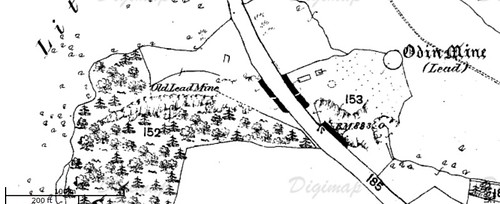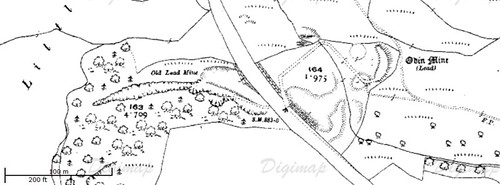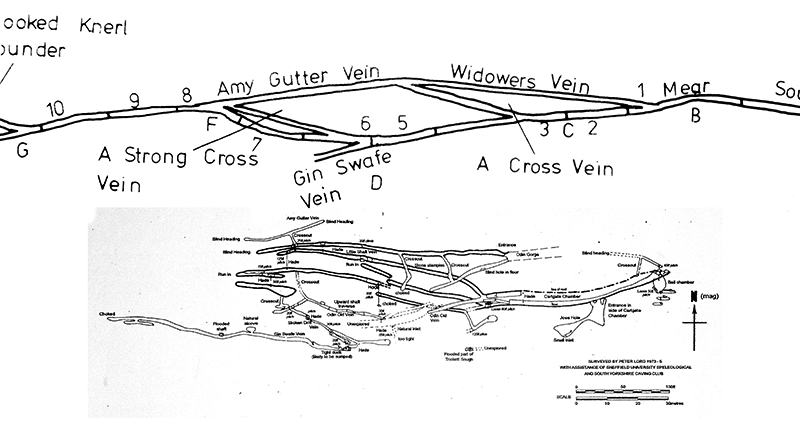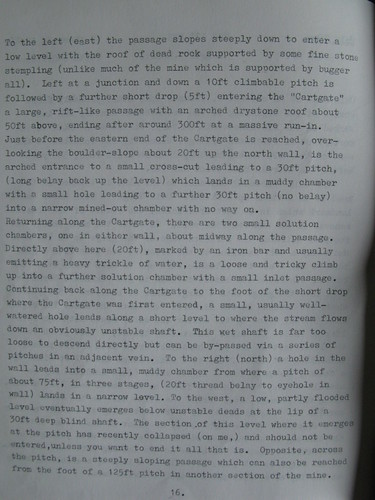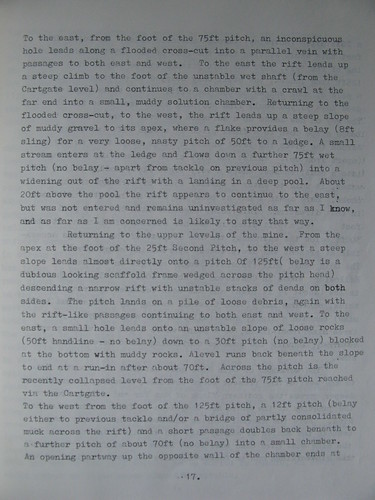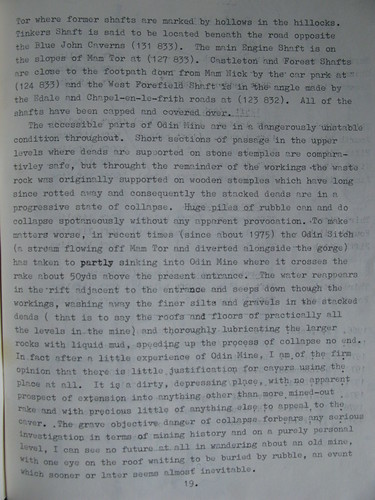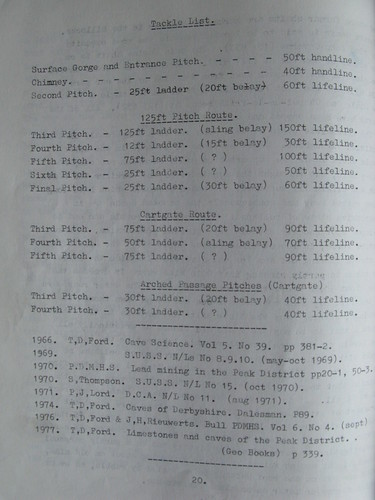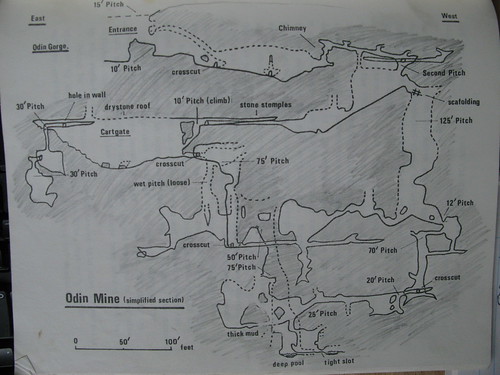pwhole
Well-known member
Roger
Remember that when Royse sank the shaft, the entire gorge floor would be about 20 feet lower than present. Also if you're referring to the current entrance as the top slot in the rock, then the cartgate may well be 80 feet below that, but that's a long way up from ground level.
But I am baffled by both Chatburn's and Royse's descriptions (I have his old book), as neither really tally with the present workings. If they dropped into the parallel passage that leads to the Bell Chamber, then I don't know where, as that has a solid roof, although I've never explored far west from the crosscut. They must have come in somewhere behind the current blockage, but Royse then describes crosscuts in the arching like boxes in a theatre - there's only one crosscut in the accessible cartgate. I still think the Widowers Vein holds some of the clues to all of this - it's totally unsurveyed, and the (now blocked) lower level entrance was right at Royse's shaft point - maybe it wasn't blocked in 1927?
As for how to support the backfilled entrance passage, I really have no idea at present - I'm no engineer, but it's a tricky job, as it's mixed shale and loose rock. Tracking the extent of the crossover of that vein with the stempled passage beneath is also tricky as it's technically a crosscut, which means it should be mostly in solid rock, but no-one has much idea of what's stacked above those stemples - their presence alone suggests something. But supporting from underneath seems fraught with risk, as shifting the weight distribution could add more instability, not less. If any mining engineers are reading, I'd love to hear a more expert opinion!
Phil.
Remember that when Royse sank the shaft, the entire gorge floor would be about 20 feet lower than present. Also if you're referring to the current entrance as the top slot in the rock, then the cartgate may well be 80 feet below that, but that's a long way up from ground level.
But I am baffled by both Chatburn's and Royse's descriptions (I have his old book), as neither really tally with the present workings. If they dropped into the parallel passage that leads to the Bell Chamber, then I don't know where, as that has a solid roof, although I've never explored far west from the crosscut. They must have come in somewhere behind the current blockage, but Royse then describes crosscuts in the arching like boxes in a theatre - there's only one crosscut in the accessible cartgate. I still think the Widowers Vein holds some of the clues to all of this - it's totally unsurveyed, and the (now blocked) lower level entrance was right at Royse's shaft point - maybe it wasn't blocked in 1927?
As for how to support the backfilled entrance passage, I really have no idea at present - I'm no engineer, but it's a tricky job, as it's mixed shale and loose rock. Tracking the extent of the crossover of that vein with the stempled passage beneath is also tricky as it's technically a crosscut, which means it should be mostly in solid rock, but no-one has much idea of what's stacked above those stemples - their presence alone suggests something. But supporting from underneath seems fraught with risk, as shifting the weight distribution could add more instability, not less. If any mining engineers are reading, I'd love to hear a more expert opinion!
Phil.



